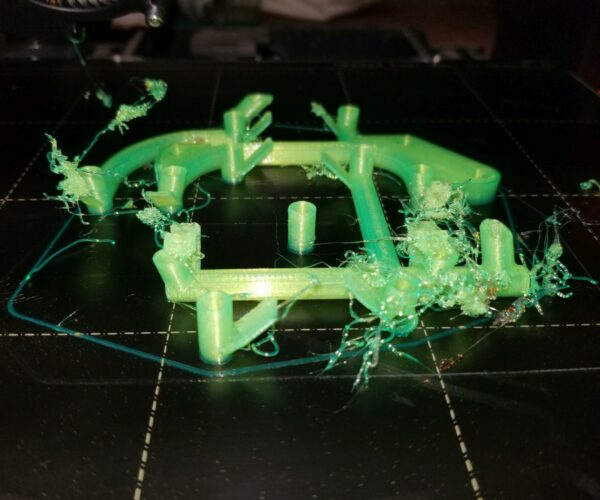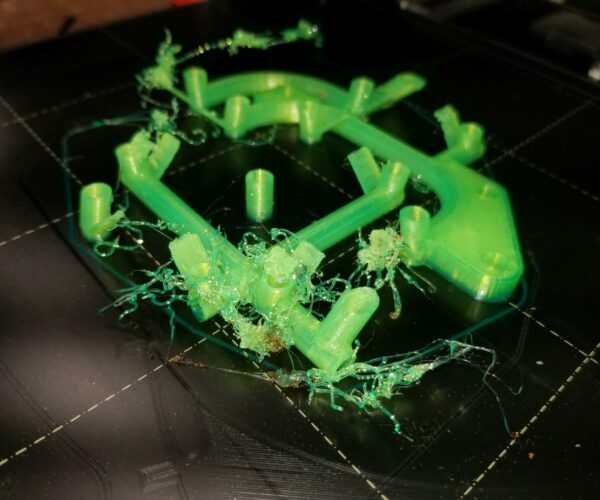Rats nest after 50 layers
I have printed many things successfully, but recently I've had prints fail, consistently, after around 50 layers. (I don't think the number of layers is relevant.) As you can see in the photo, the bed adhesion is fine. But at some point it starts extruding in air and producing the rats nest.
I do see some extrusion that appears to be discolored (burnt?) but not very much.
Any idea what is going on?
BTW... PETG using the Prusa PETG profile and 0.15mm SPEED
RE: Rats nest after 50 layers
Hard to tell from the pictures - you're saying that nothing broke loose from the bed and the head just started printing out in the middle of space? Under those circumstances - have you ever printed this thing in the picture successfully before? Not knowing what the shape eventually looks like, is it failing when printing a massive bridge?
I can see some globbing - and that burnt stuff had been stuck to the nozzle and eventually globbed down into the mess. Somewhere the head is plowing into plastic to build up a glob like that, or possibly over-extruding. Any signs of warping where parts of the print slowly eased into the air - that's a common cause of nozzle starting to plow into prior extrusions.
RE: Rats nest after 50 layers
Actually, after posting this, I checked with the creator of the model and they say that even with supports this is extremely difficult to print. So, I guess I'm no longer surprised that it fails.
Nonetheless, I'd like to know what is the mechanism for the failure? What is actually going wrong? Anyone know?
RE: Rats nest after 50 layers
@dan-rogers
Thanks for the message, Dan.
The model has some slender elements that go up at a 45 degree angle from the bed. I suspect that if these weren't so slender, it would be more successful. As it is, I suspect that the thin leading edge is indeed warping and that is causing the collision with the head and subsequent mayhem.
RE: Rats nest after 50 layers
Try adding a brim. Skinny parts that are long have a hard time with cooling of upper layers putting torque on the layer stuck to the bed. Increase the bed touch surface area with a brim - I'd suggest 3 or 4mm. It should be able to handle the 45 degree angle no problem. You can help in that area by adding
extra perimeters if needed (advanced)
detect bridging perimeters
And I like to slow down the bridge speed by 5 or so. With these settings I can get decent bridging at crazy angles.

